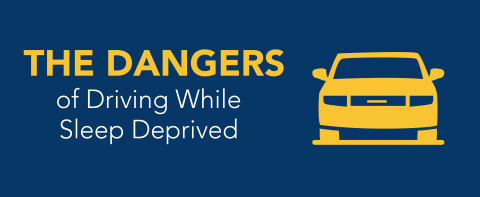The Dangers of Driving While Sleep Deprived

Do you frequently go on long driving trips? During these drives, be aware of the onset of fatigue, drowsiness, or just plain boredom— here’s how you can identify the warning signs and put some preventative measures in action.
Dangers
Fatigue lessens your capability to perform tasks, such as driving. This is because senses are dulled and both mental and physical processes are slower than they would be with a well-rested mind. Fatigue can also cause drowsiness, and drowsy drivers are the cause of many preventable collisions and close calls. Nearly one of five fatal car crashes involve drowsiness. In addition, the majority of the drivers involved in these types of crashes don’t recognize their condition at the time.
Warning Signs
There are several warning signs of drowsiness that drivers need to be aware of. For instance, if you find that you’re traveling well below the speed limit for extended periods of time or suddenly tailgating other vehicles, you may be experiencing this dangerous driving condition. Other signs include: having a fixed stare, trouble keeping your head up, drifting between lane positions, and the inability to concentrate on the road due to wandering, disconnected thoughts.
Preventive Measures
Compensate for fatigue on long drives by resting before you start. Rest is the only true remedy for fatigue, however, people often need to drive even when they’re tired. If you’re tired after work or school, take a break for a few minutes before driving. Try to take a “safety stop” at least once every two hours or after 100 miles. During this time, make sure you get out of the car to walk, stretch, or grab a snack. If you’re traveling with others, you can also change drivers during these routine breaks.